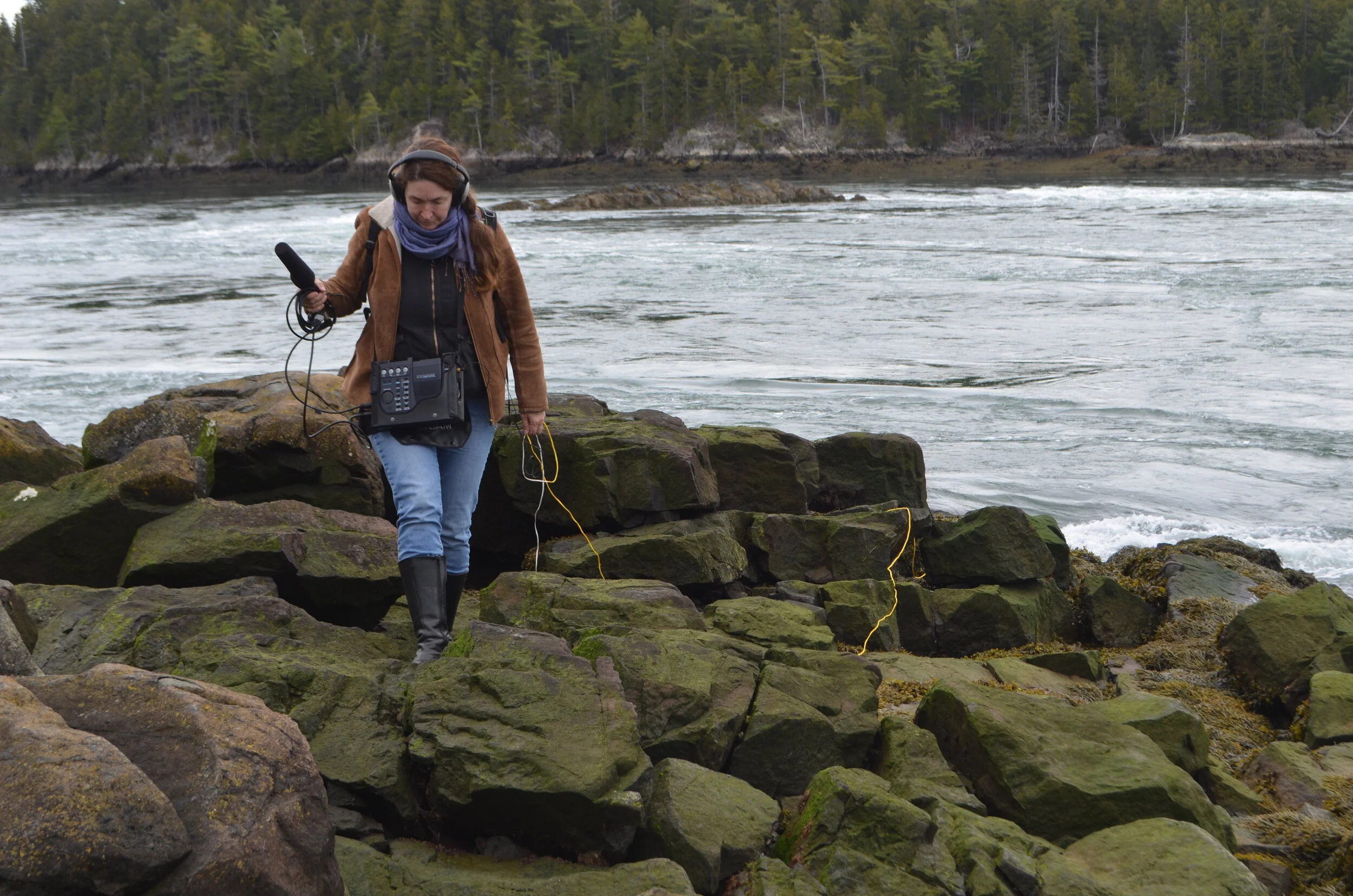
Tracey Cockrell is a sculptor with an interdisciplinary practice. Based in Woodstock, NY and Portland, ME, Cockrell is chairperson of the MFA in Studio Art at Maine College of Art & Design, and recently served as a visiting faculty member in sculpture at Bennington College.
Ranging from installations and sculptures to sound art and collaborative performances, Cockrell’s practice explores the complex relationships between language and landscape, psychoacoustics and the subjectivity of place. Her most notable works are the ‘Poemophone’ series—a set of experimental sculptural instruments derived from the mbira and played in collaborative performance with a group of musicians, writers, and artists. Cockrell’s sculptures and sound art have exhibited nationally and been featured in alternative radio programs and live performance at festivals in New York, San Francisco, Oakland, and Seattle.
In 2024, Cockrell’s work debuted internationally in Munich’s KloHäuschen Biennale. 2022 featured a solo exhibition of Cockrell’s works at Jane Street Art Center in Saugerties, NY. Cockrell’s work has been discussed in The Portland Press Herald, The Atlantic Monthly, The Art Section, Sculpture Magazine, ArtNewEngland, The Boston Sunday Globe, WGBH TV’s ‘Greater Boston Arts,’ and Maine Public Radio’s ‘Maine Things Considered’, among others. Residencies include Ucross Foundation, Montello Foundation, I-Park Foundation, SEARS Residency at The Parsonage, Penland School of Crafts, University of Massachusetts at Dartmouth, Maine Farmland Trust, The Tides Institute & Museum of Art, Leland Iron Works, Hewnoaks Artist Colony, Oregon College of Art & Craft, and Skowhegan School of Painting & Sculpture. Cockrell earned an MFA at University of California, Berkeley, a BA from the College of William & Mary, and post-baccalaureate studies in the sculpture department at Virginia Commonwealth University.
ARTIST’S STATEMENT
Using sympathetic resonance as a metaphor and as a means of sound propagation, I make sculptures, installations, visual scores, and performances that explore the origins of language, challenge the authority of language for making meaning, and engage viewers in reading our landscapes in new ways. I am interested in synesthesia and the poetic potential of the decay of language through acts of translation. Eco-feminism, linguistic theory, and experimental music drive my creative research. Frequently, my projects evolve in collaboration with other artists, writers, and musicians.
My projects often begin with site-specific listening walks. I hike to collect field recordings, study relationships between natural and manmade landscapes, and harvest plant materials. Returning to my studio, I mix field recordings to create soundscapes as the source of my work. Harvested plants yield a range of materials for my use, including inks, fibrous membranes, rosin, paper pulp. Combining high-tech and low-tech together, I use various membranes, such as kelp, vegetable papyrus and handmade paper, with compact electronics to make functioning, low-fidelity electronic speakers that vibrate with the sounds of site-specific ecosystems. Drawing in collaboration with the landscape, I improvise mark-making with spore release on handmade paper. Using fugitive inks to make symmetrical patterns and visual phrases, I compose visual scores as a sightline, a timeline, a landscape, a sonagram.
In a way, we can describe thoughts as rhythmic pulsations, and the way that we think is to leap from one rhythmic pulsation to another to create images, ideas. My sound sculptures and installations explore the origins of language, challenge the authority of language for making meaning, and invite participants to play within compositional strategies to make or disrupt meaning.